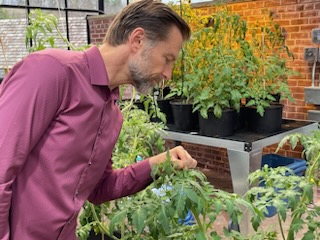Fermenting vegetables is an age-old practice that not only preserves their nutritional value but also unlocks various health benefits. From sauerkraut and kimchi to pickles and relishes, fermented vegetables add flavour and probiotic goodness to our diets. As interest in traditional food preservation methods surges, so does the need to explore the best vegetable ferment techniques. In this article, we will delve into the various ways of fermentation and discover the tips and tricks that will help you achieve the most delicious and nutritious results.
Understanding the Science of Vegetable Fermentation
Before diving into the different techniques, grasping the science behind vegetable fermentation is essential. Fermentation is a natural process involving sugar breakdown in vegetables by beneficial bacteria, yeast, and other microorganisms. These microbes convert the sugars into lactic acid and other organic acids, creating an acidic environment that prevents harmful bacteria from growing and ensures the preservation of the vegetables.
Choosing the Right Vegetables for Fermentation
Not all vegetables are equally suitable for fermentation. For successful fermentation, picking the right vegetables with a proper balance of sugars and nutrients is crucial. Popular choices include cabbage, cucumbers, carrots, radishes, and bell peppers. Fresh, organic produce is always recommended for the best flavour and texture.
Salt Brine Fermentation: A Classic Approach
Salt brine fermentation is one of the oldest and simplest vegetable preservation methods. To start, chop or shred the vegetables and submerge them in a water and salt brine solution. The salt concentration should be around 2-3% of the total water weight. Use non-iodized salt, as iodine can hinder the fermentation process. Place the vegetables in a clean, airtight container to ferment at room temperature. Remember to burp the container daily to release built-up gas. The fermentation process may take anywhere from a few days to several weeks, depending on the ambient temperature and desired level of tanginess.
Whey-Based Fermentation: Adding Probiotic Power
Whey, the liquid left after straining yoghurt or kefir, can be an excellent addition to vegetable fermentation. The natural probiotics in whey can jumpstart the fermentation process and provide an extra dose of beneficial bacteria. Mix the whey with salt water to create the brine and ferment the vegetables as usual. This method may lead to a quicker fermentation process and add a slightly tangier flavour to the final product.
Lactic Acid Fermentation: Preserving without Brine
Lactic acid fermentation is a unique method that involves fermenting vegetables without submerging them in brine. Instead, vegetables like cabbage are pounded or massaged with salt to extract their natural juices. These juices create the brine needed for fermentation. This technique works exceptionally well for making sauerkraut. After massaging the cabbage with salt, tightly pack it into a jar, ensuring it is fully submerged in its juices. The result is a more vibrant and crunchy sauerkraut.
Fermentation Weights and Airlocks: Ensuring Success
To achieve consistent results and minimize the risk of spoilage, consider using fermentation weights and airlocks. Fermentation weights help submerge the vegetables in the brine, preventing mould growth caused by exposure to air. On the other hand, airlocks allow carbon dioxide to escape while preventing oxygen from entering the container. This creates an anaerobic environment, ideal for the growth of beneficial bacteria and successful fermentation.
Temperature and Fermentation Duration
The temperature at which vegetables ferment significantly impacts the taste and texture of the final product. Lower temperatures result in slower fermentation, allowing a more complex flavour to develop. In contrast, warmer temperatures accelerate the process but may lead to a tangier and softer outcome. Experiment with different temperatures to find the balance that suits your preferences best. Additionally, remember that fermentation duration varies depending on the vegetable, the method used, and personal taste preferences.
Fermenting vegetables is an art that opens up a world of culinary delights and health benefits. Each technique offers unique advantages, from classic salt brine fermentation to the innovative lactic acid method. By selecting suitable vegetables, understanding the science behind fermentation, and using proper tools and processes, you can master the art of vegetable fermentation and enjoy homemade, probiotic-rich delights that enhance your culinary creations and support your well-being. Embrace the age-old tradition of fermentation and embark on a journey of flavor and nutrition that will enrich your culinary endeavors for years to come.

